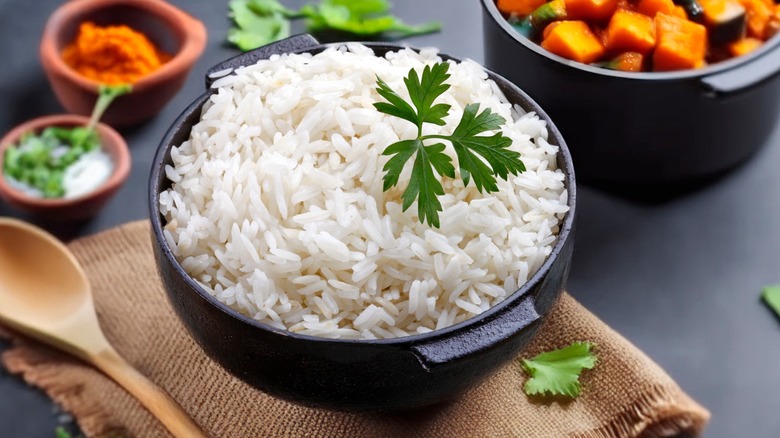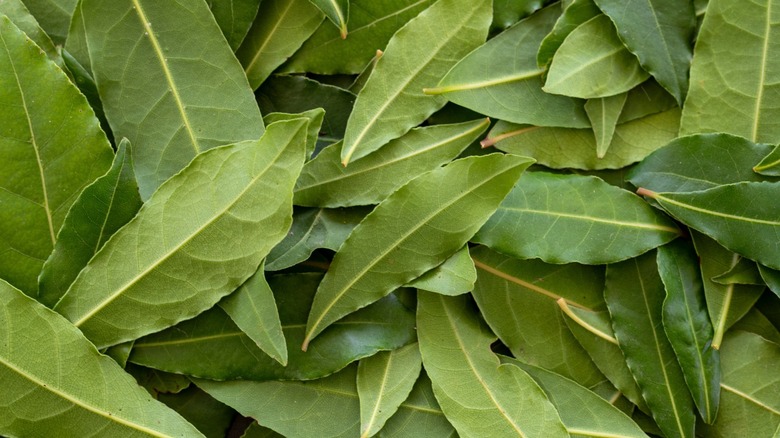The 1-Ingredient Upgrade For The Best Rice, Hands Down
Rice can be a surprisingly complex side dish, involving a fair bit more know-how than you might imagine. The differences between basmati and jasmine rice are more than meet the eye, for example, and let's not even talk about the fact that you need to know how to store and reheat cooked rice, because it could actually get you pretty sick if you get it wrong. Perhaps the biggest stumper concerning rice and rice knowledge, however, is how to get your grains to taste good. Taste is individual, of course, but we must admit that unadorned rice can be bland and unappealing. Some folks like to add a pat of butter, while other purists insist that all you need is salt. We've discovered, however, that just one simple but unconventional addition can elevate your rice and make it dreamy. All you need is a bay leaf or two.
Bay leaves come from bay laurel trees and are used fresh, dried, or ground in savory foods as an aromatic ingredient. Thyme and oregano are perhaps their closest counterparts in terms of herbal analogues. Some detractors claim that bay leaves are a culinary conspiracy, adding nothing in the way of flavor, but they couldn't be more wrong. The pine-y, delicate character of bay leaf is really unlocked by slow simmering, which is exactly what goes on in your rice cooker. It's never going to overwhelm your food or drown out the rest of your dish, but it will add a sophisticated, subtle "something" that elevates your entire dinner.
How to infuse your rice with the flavor of bay leaf
There's not much of a mystery to jazzing up your rice with bay leaves. While some of the uses for your rice cooker involve a recipe, all you need to do is steep the bay leaf or leaves in the liquid with your rice as it cooks. With water, the flavor will have a nuanced herbal taste to it that some have compared to green tea; in stock, you will unlock more umami tastes. One leaf may not be enough if you are making a lot of rice, but there's rarely such a thing as going overboard, so feel free to add a few. This also works when making rice on the stove; just add your bay leaves to your boiling water before simmering.
If you want to really unlock the boldest bay leaf flavor, consider using a pilaf method for preparing your rice. First, cook the bay leaves in some oil, allowing the fat to infuse with the flavor of the herbs, then toast your rice in the flavored oil before cooking as usual. This step can also add a nutty flavor to the final dish.
We've seen some cooks also add turmeric powder to their bay leaf rice for both color and savor. The resulting dish will be pleasantly golden and beautifully fragrant. Of course, as is the case with other meals involving bay leaves, remove the actual leaf before eating. Bay leaves are not poisonous, despite some wide-reaching rumors, but their texture will likely not be enjoyable in your soft, fluffy rice.

